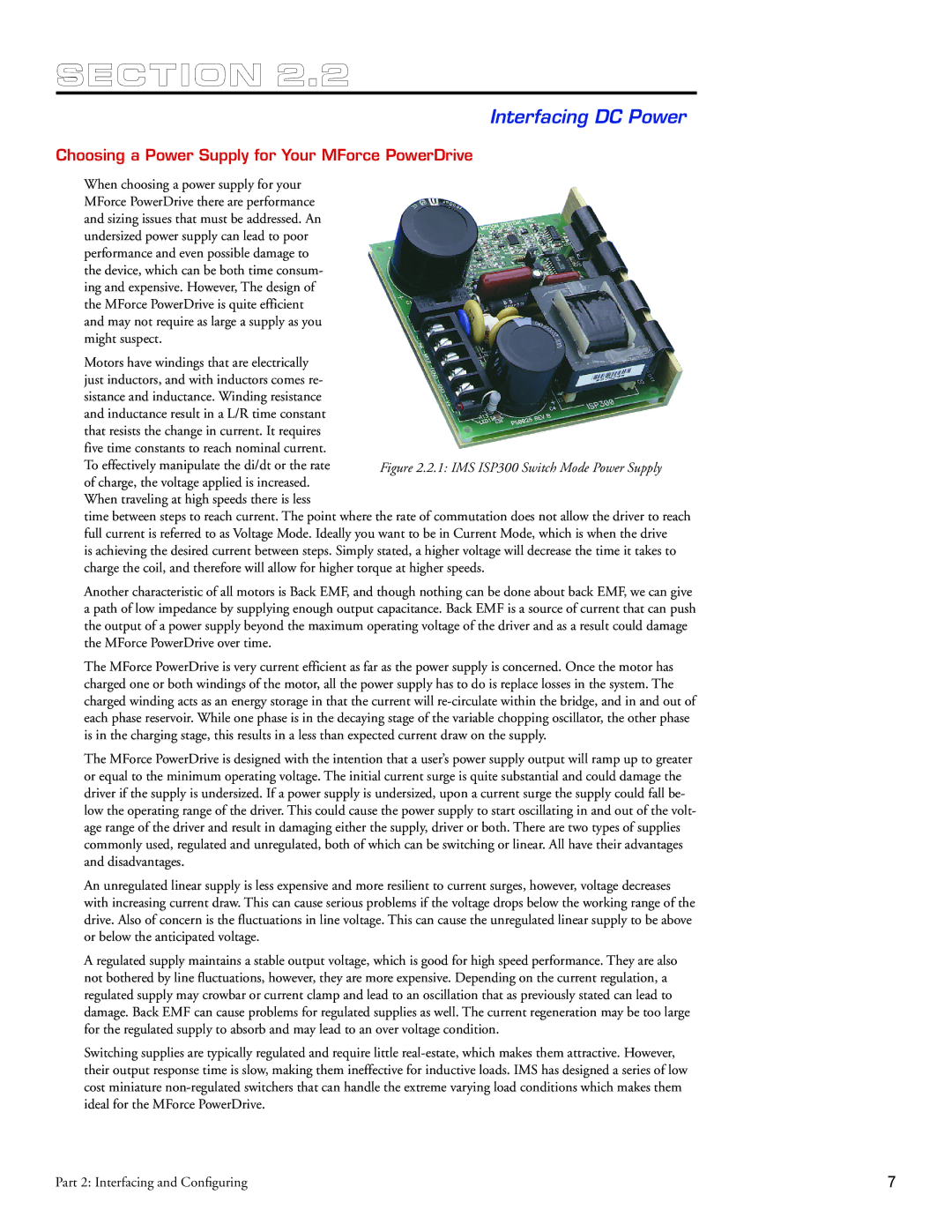
SECTION 2.2
Interfacing DC Power
Choosing a Power Supply for Your MForce PowerDrive
When choosing a power supply for your MForce PowerDrive there are performance and sizing issues that must be addressed. An undersized power supply can lead to poor performance and even possible damage to the device, which can be both time consum- ing and expensive. However, The design of the MForce PowerDrive is quite efficient and may not require as large a supply as you might suspect.
Motors have windings that are electrically just inductors, and with inductors comes re- sistance and inductance. Winding resistance and inductance result in a L/R time constant that resists the change in current. It requires five time constants to reach nominal current. To effectively manipulate the di/dt or the rate of charge, the voltage applied is increased. When traveling at high speeds there is less
time between steps to reach current. The point where the rate of commutation does not allow the driver to reach full current is referred to as Voltage Mode. Ideally you want to be in Current Mode, which is when the drive
is achieving the desired current between steps. Simply stated, a higher voltage will decrease the time it takes to charge the coil, and therefore will allow for higher torque at higher speeds.
Another characteristic of all motors is Back EMF, and though nothing can be done about back EMF, we can give a path of low impedance by supplying enough output capacitance. Back EMF is a source of current that can push the output of a power supply beyond the maximum operating voltage of the driver and as a result could damage the MForce PowerDrive over time.
The MForce PowerDrive is very current efficient as far as the power supply is concerned. Once the motor has charged one or both windings of the motor, all the power supply has to do is replace losses in the system. The charged winding acts as an energy storage in that the current will
The MForce PowerDrive is designed with the intention that a user’s power supply output will ramp up to greater or equal to the minimum operating voltage. The initial current surge is quite substantial and could damage the driver if the supply is undersized. If a power supply is undersized, upon a current surge the supply could fall be- low the operating range of the driver. This could cause the power supply to start oscillating in and out of the volt- age range of the driver and result in damaging either the supply, driver or both. There are two types of supplies commonly used, regulated and unregulated, both of which can be switching or linear. All have their advantages and disadvantages.
An unregulated linear supply is less expensive and more resilient to current surges, however, voltage decreases with increasing current draw. This can cause serious problems if the voltage drops below the working range of the drive. Also of concern is the fluctuations in line voltage. This can cause the unregulated linear supply to be above or below the anticipated voltage.
A regulated supply maintains a stable output voltage, which is good for high speed performance. They are also not bothered by line fluctuations, however, they are more expensive. Depending on the current regulation, a regulated supply may crowbar or current clamp and lead to an oscillation that as previously stated can lead to damage. Back EMF can cause problems for regulated supplies as well. The current regeneration may be too large for the regulated supply to absorb and may lead to an over voltage condition.
Switching supplies are typically regulated and require little
Part 2: Interfacing and Configuring
